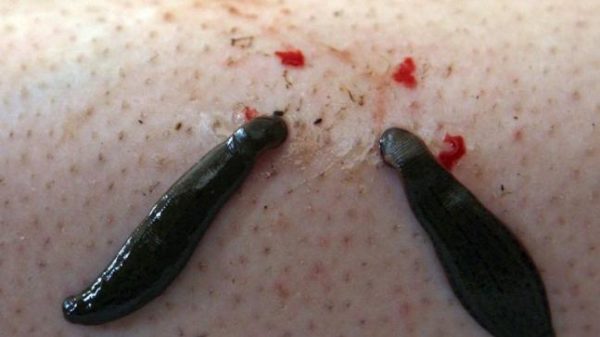March 21 is celebrated as Navroz in many parts of the world as the beginning of the new year.
People in Kashmir too celebrate it as the beginning of the new agricultural season with seeds being sown and farms made ready.
On this day some Kashmiris go for a “new” life, they start a course of “leech therapy”.
Many people think attaching live leeches to the human body can cure chronic diseases.
Leeches, widely used by medical professionals to promote bloodletting in the past, are making a comeback in Jammu and Kashmir to heal a number of diseases, attracting patients from all over India.
There are six hospitals in Kashmir that have started using leeches on patients suffering from skin diseases, arthritis, chronic headaches and sinusitis.
“We have been using leeches for the past four years and the results are encouraging,” said Munir Ahmad, who practises Unani. “More and more patients are visiting us.”
He says leech saliva contains hirudin, an anticoagulant, as well as an analgesic and anaesthetic compound.
“Leeches are wonder-doctors. The saliva of leeches contains many bio-active substances which enter the body of a patient while leeches suck blood,” another Unani practitioner said.
Some doctors from the medical mainstream are sceptical about “leech therapy” saying little research has been done on the subject.
In 2004, the use of blood-sucking leeches was approved by the US government as a tool for healing skin grafts or restoring circulation.
In Kashmir, some patients said the treatment was helpful.
Between two and four leeches are applied to the body until they drop off after 25-30 minutes. The leeches are then killed. Hospitals charge Rs 50 per leech, plus the doctor’s consultation fee.
Leeches were first used in medicine as early as 200 BC and were common until the mid-1800s when newer therapies took their place.






Leave a reply